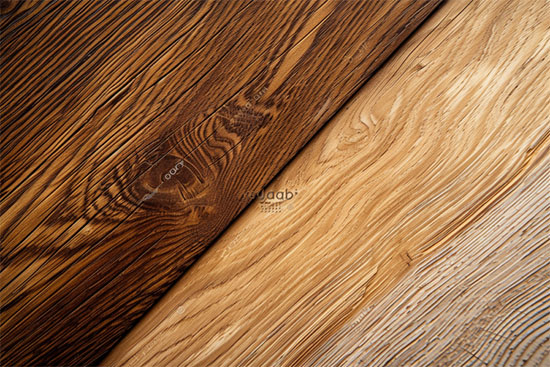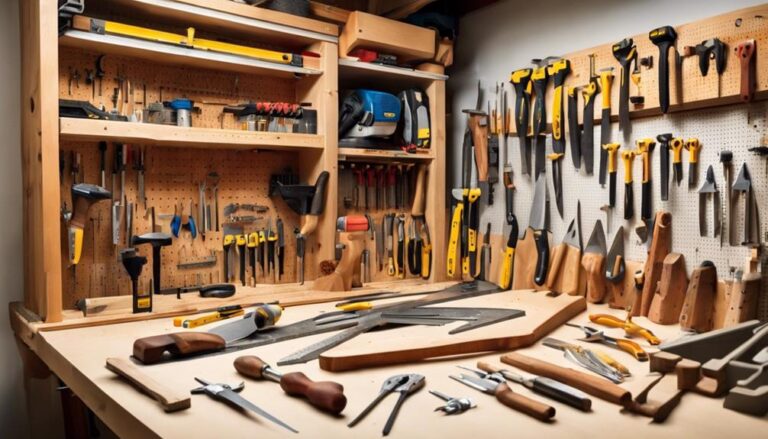You might not be aware, but the choice of wood for your bathroom furniture involves more than just picking what looks good. It’s crucial to select moisture-resistant woods like teak, cedar, maple, oak, and walnut, each offering unique benefits in a humid environment.
Teak, for instance, stands out for its exceptional water resistance and durability, making it a top contender.
But before you make a decision, consider the specific advantages and aesthetic appeals of each option. This knowledge can significantly impact the longevity and beauty of your bathroom furniture, inviting you to explore further how these woods can transform your space.
Contents
Key Takeaways
- Teak is highly recommended for its exceptional water resistance and durability.
- Cedar offers natural decay resistance and a pleasant aroma ideal for bathrooms.
- Oak’s tight grain and natural oils make it a solid choice for moisture-prone areas.
- Walnut combines hardness with a luxurious look, perfect for upscale bathroom furniture.
The Superiority of Teak

When considering the optimal choice for bathroom furniture, teak’s inherent moisture resistance and durability set it apart.
Teak, a high-quality wood, possesses natural oils that render it exceptionally water resistant, making it an ideal candidate for the humid environment of a bathroom. Its durability is unparalleled, with a high decay resistance that ensures longevity, even in the most moisture-laden settings.
Moreover, the teak’s robustness means it holds up admirably against scratches and dents, maintaining its elegant appearance over time. These characteristics not only contribute to the functional longevity of bathroom furniture crafted from teak but also make it a wise investment despite its higher price point.
For those seeking durable, decay-resistant, and aesthetically pleasing bathroom furniture, teak stands unrivaled.
Cedar’s Durability Explained

While teak undoubtedly sets a high standard for bathroom furniture, cedar also emerges as a top contender due to its natural decay and moisture resistance. Cedar’s wood is inherently durable, brimming with natural oils that fortify it against water damage—making it an ideal candidate for bathroom furniture.
These oils not only repel water but also imbue cedar with a pleasant aroma and insect-repelling qualities. However, its propensity for splintering and tearout necessitates careful handling and finishing to ensure its longevity.
The combination of cedar’s water-resistant properties and its inherent durability makes it a popular choice for both outdoor and indoor furniture applications, including bathroom cabinets and shelving, showcasing its prowess as a moisture-resistant wood.
Why Choose Maple

Choosing maple for your bathroom furniture combines affordability with durability, offering a cost-efficient solution that stands up to the rigors of moist environments.
Maple’s reputation as a budget-friendly option doesn’t come at the expense of quality. Its inherent durability and scratch-resistant properties ensure that your bathroom cabinets and shelves will withstand daily use while maintaining their aesthetic appeal.
The wood’s even grain contributes to a smooth finish, elevating the look of your bathroom with a touch of natural beauty.
Despite its mid-range pricing, maple delivers a balance that few materials can, providing a reliable and sturdy choice that’s particularly suited for the moisture and humidity typical in bathrooms.
Opting for maple means investing in moisture-resistant, durable furniture that doesn’t sacrifice style or break the bank.
Oak’s Moisture Resistance

Oak stands out as an exceptionally moisture-resistant wood, making it an ideal choice for bathroom furniture exposed to water. When you’re selecting materials for your bathroom, consider these key points about Oak:
- Tight Grain Structure: Oak’s tight grain and natural oils enhance its durability, significantly reducing the risk of water damage.
- Natural Oils: These oils boost Oak’s resistance to moisture, helping to prevent warping, cracking, and decay in humid environments.
- Longevity: Its resistance to humidity and water damage makes Oak a prime choice for bathroom cabinets, vanities, and shelving.
- Maintenance: With regular care, Oak furniture can retain its quality and appearance, even in the moist conditions of a bathroom, for many years.
These factors underscore Oak’s suitability and reliability for bathroom furniture, offering both functionality and enduring appeal.
The Versatility of Walnut

In the realm of bathroom furnishings, walnut stands out for its exceptional hardness and scratch resistance, making it a top choice for areas subjected to frequent use. Its durable nature ensures that even in kids’ bathrooms, it withstands the daily hustle and bustle.
| Quality | Benefit |
|---|---|
| Scratch-resistant | Maintains an elegant appearance |
| Dark wood color | Adds a rich, luxurious look |
Walnut’s attractive dark wood not only offers a touch of elegance but also contributes to the longevity of bathroom furniture. When finished properly, this wood species becomes a long-lasting solution, ensuring that your bathroom maintains an attractive and sophisticated ambiance. Opting for walnut means selecting a material known for its rich color and ability to create an inviting, durable space.
Conclusion
In summary, when outfitting your bathroom with wood furniture, opting for moisture-resistant types is crucial.
Teak stands out for its unparalleled water resistance and decay prevention capabilities.
Cedar offers notable durability, making it a solid choice.
Maple provides an elegant appearance without sacrificing durability.
Oak surprises with its moisture resistance, and walnut impresses with its hardness and scratch resistance.
Ensuring proper ventilation and regular maintenance will maximize the lifespan of these woods, keeping your bathroom both stylish and functional.






